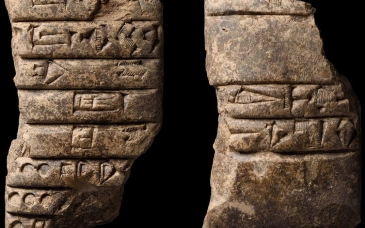Among the Seven Wonders of the Ancient World, the Hanging Gardens of Babylon stand as an enduring symbol of opulence and botanical marvel. Yet, the mysteries surrounding these lush terraced gardens continue to captivate historians and enthusiasts alike. Join us on a journey to explore the captivating tale of the Hanging Gardens, where verdant beauty and architectural ingenuity intertwined in the heart of ancient Babylon.
1. Legendary Origins: The Hanging Gardens were said to have been built by King Nebuchadnezzar II for his homesick wife, Amytis of Media, who longed for the green hills and valleys of her homeland. This romantic tale adds an ethereal touch to the allure of the gardens, shrouding them in both myth and history.
2. Architectural Marvel: What set the Hanging Gardens apart was not just their botanical beauty but the engineering brilliance behind them. Constructed on terraces with ascending tiers, the gardens resembled a green mountain rising high above the city. The irrigation system, possibly utilizing a chain pump or Archimedean screw, ensured water flowed to the uppermost levels, sustaining a diverse array of plants.
3. Breathtaking Flora: The gardens were adorned with a rich assortment of flora, from vibrant flowers to exotic trees. Some historical accounts describe trees with massive trunks and foliage so dense that they gave the appearance of a living mountain covered in greenery. The aromatic scents and vibrant colors would have created an oasis of sensory delight.
4. Waterworks and Irrigation: A marvel of ancient irrigation, the Hanging Gardens were believed to have been watered by a sophisticated system. While the exact mechanics remain a subject of debate, it's widely accepted that an intricate network of aqueducts and pumps was employed to transport water from the Euphrates River to the summit of the terraced structure.
5. Controversial Existence: Despite its legendary status, the actual existence of the Hanging Gardens has sparked scholarly debate. While historical accounts from ancient writers like Strabo and Philo of Byzantium provide vivid descriptions, archaeological evidence has been elusive. Some theories propose that the gardens might have been located in Nineveh rather than Babylon.
6. Cultural Impact: The Hanging Gardens, whether real or a product of myth, have left an indelible mark on human imagination. Their depiction in art, literature, and architectural designs throughout the ages attests to the cultural impact of this legendary creation. The UNESCO World Heritage site of Babylon, where the gardens are believed to have stood, continues to draw visitors seeking to uncover the mysteries of the ancient world.
7. Legacy and Inspiration: The Hanging Gardens of Babylon, whether a product of reality or myth, have become a symbol of humanity's desire to shape the natural world into awe-inspiring beauty. The legacy of these gardens endures not only in historical records but also in the ongoing pursuit of creating harmonious spaces that blend architecture and nature.
The Hanging Gardens of Babylon remain a testament to the human spirit's capacity for creating beauty, mystery, and architectural marvels. Whether they existed in the physical realm or were woven into the fabric of myth, the Hanging Gardens continue to captivate our imagination, inviting us to explore the intersection of history, nature, and the enduring quest for breathtaking beauty.





